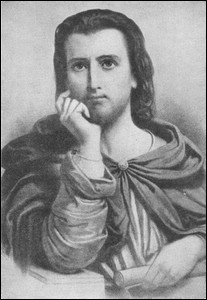Pierre Abelard [Peter in English usage].
French philosopher and theologian. Of a noble Breton family, he became a lecturer in Paris. He seduced and married a 17-year-old pupil, *Héloïse, whose uncle, Fulbert, canon of Notre Dame, eventually had him castrated. She became a nun and he a monk. Later his retreat at Nogent-sur-Seine, known as Le Paraclet, was visited by scores of disciples.
Convicted of heresy, he was eventually absolved by the pope. His own account of his life and his correspondence with Héloïse have perpetuated one of the most famous love stories of the world. In 1817 the two were laid together in one tomb in the Père Lachaise cemetery in Paris.
His contribution to the philosophical problem of universals was that a general word (e.g. ‘pink’) does not have meaning by standing for a single quality (e.g. pinkness) that somehow exists, but rather by being tied to a mental concept we acquire by noticing similarities between different things (e.g. pink ones).
He extolled the use of reason in religion while giving a place to faith. One of his best known works is Sic et non (Yes and No), which revealed the contradictions in the works of the early Christian Fathers.

